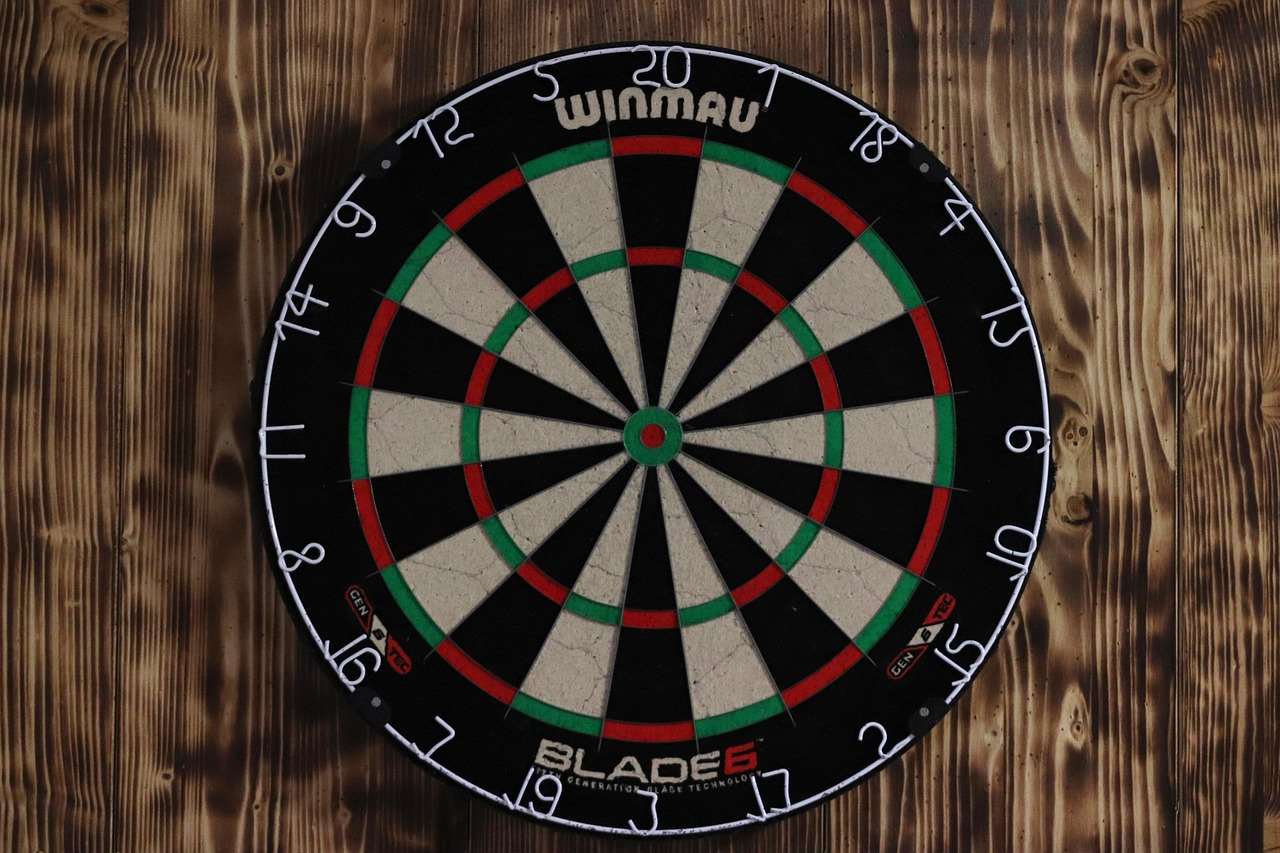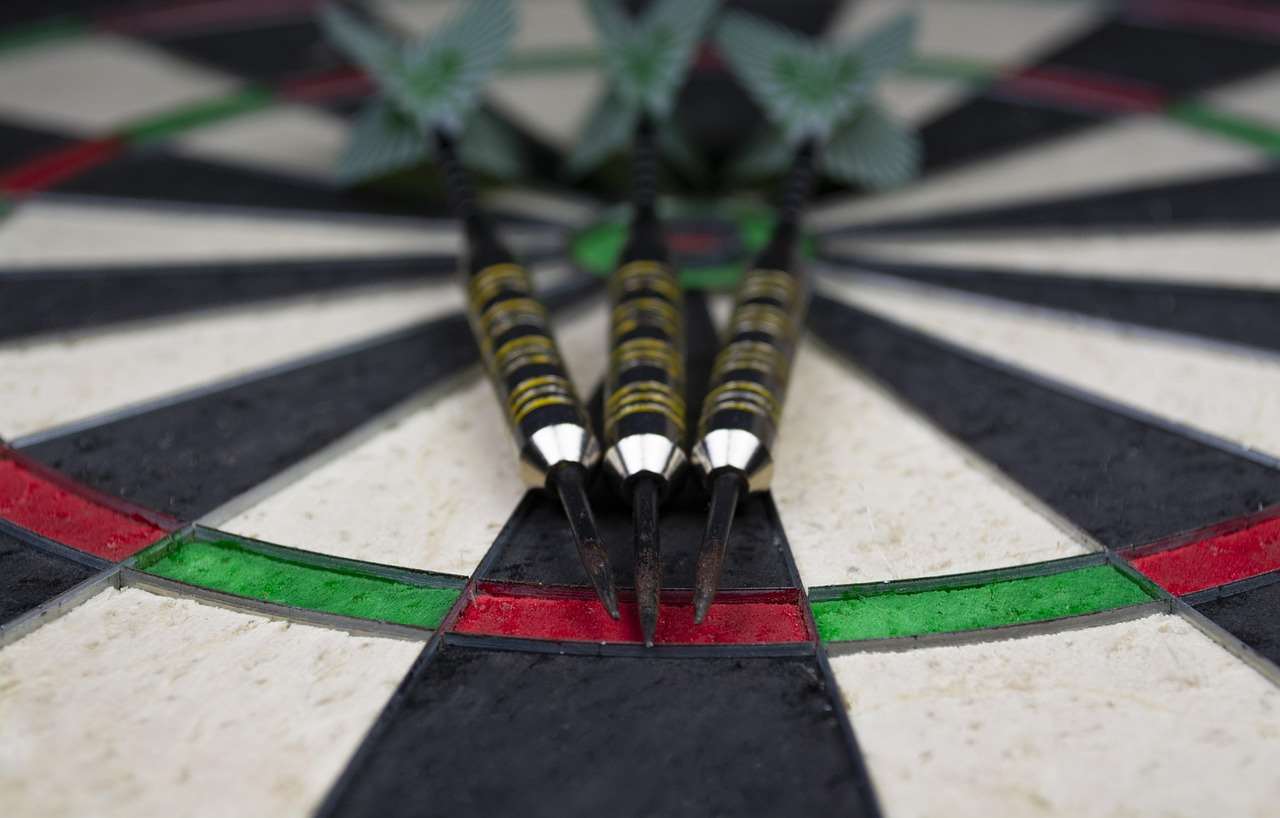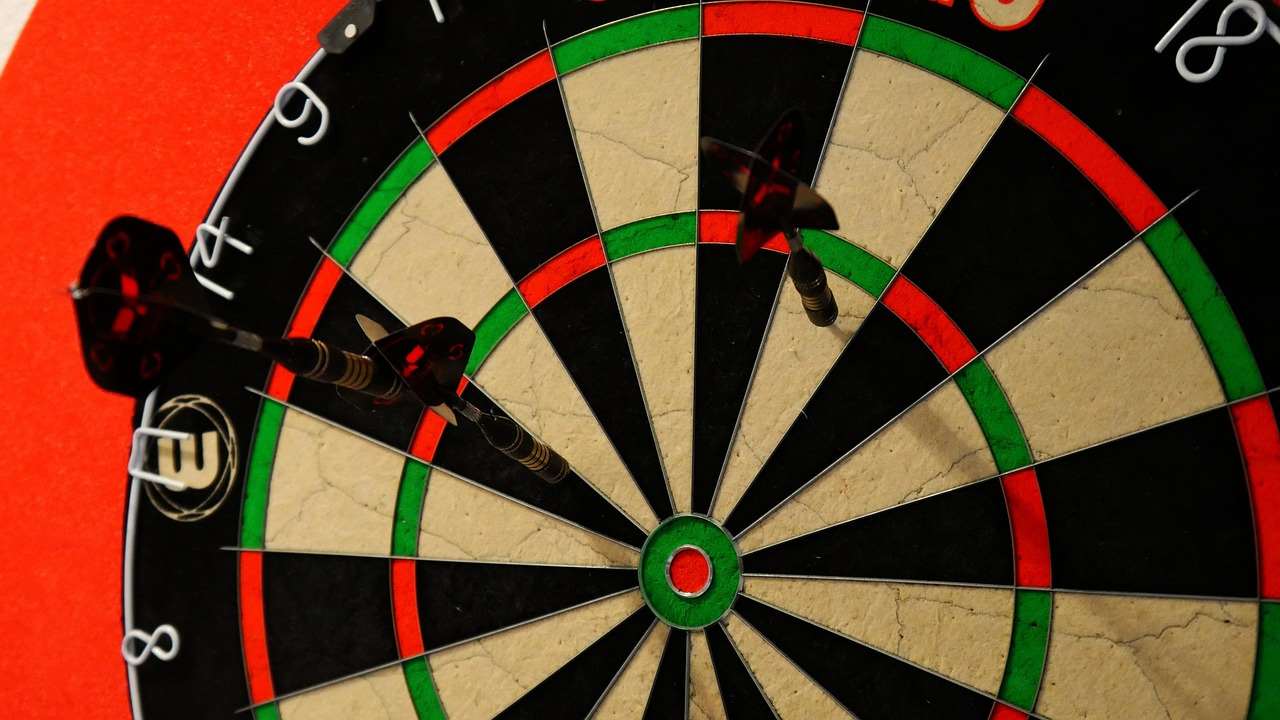Creating genuinely inclusive darts events requires addressing several key challenges, but overcoming them unlocks a broader audience and a more vibrant sporting community. This article will explore the specific Inclusive Darts Event Challenges, offering practical strategies to foster accessibility, diversity, and equal opportunity in the world of darts.
⚠️ Still Using Pen & Paper (or a Chalkboard)?! ⚠️
Step into the future! The Dart Counter App handles all the scoring, suggests checkouts, and tracks your stats automatically. It's easier than you think!
Try the Smart Dart Counter App FREE!Ready for an upgrade? Click above!
Understanding the Landscape: Key Inclusive Darts Event Challenges
Organizing an inclusive darts event isn’t simply about opening the doors; it demands a thoughtful approach to dismantle existing barriers and create a welcoming environment for everyone. This involves considering various factors, from physical accessibility to cultural sensitivity. Let’s examine some of the primary hurdles that organizers often face:
- Physical Accessibility: Many venues lack adequate facilities for individuals with disabilities. This can range from the absence of ramps and accessible restrooms to cramped spaces that make maneuvering difficult. Ensuring wheelchair users can easily access the oche and spectator areas is crucial.
- Sensory Considerations: Loud noises, flashing lights, and crowded environments can be overwhelming for individuals with sensory sensitivities, such as those with autism or sensory processing disorders. Creating designated quiet zones and minimizing sensory overload are essential steps.
- Financial Barriers: The cost of entry fees, travel, and accommodation can be prohibitive for some individuals, particularly those from low-income backgrounds. Offering discounted tickets, travel subsidies, or free entry for caregivers can help to alleviate these financial burdens.
- Language and Communication: Language barriers can exclude individuals who don’t speak the dominant language. Providing interpreters, translated materials, or visual aids can improve communication and accessibility.
- Cultural Sensitivity: It’s vital to be mindful of cultural differences and avoid stereotypes or insensitive remarks. This includes being aware of dietary restrictions, religious practices, and other cultural norms.
- Gender Inequality: While progress has been made, gender inequality still exists in darts. Actively promoting female participation and creating opportunities for women to compete on an equal footing are essential.
- Lack of Representation: A lack of visible role models from diverse backgrounds can discourage participation. Actively seeking out and promoting individuals from underrepresented groups can help to inspire others.
Successfully addressing these Inclusive Darts Event Challenges will create a more welcoming and equitable environment for all participants and spectators.

Practical Solutions for Overcoming Accessibility Barriers
Tackling physical and sensory accessibility requires a proactive and detail-oriented approach. Here are some actionable steps that event organizers can take:
- Venue Selection: Prioritize venues that already offer accessible features, such as ramps, elevators, accessible restrooms, and designated wheelchair seating areas. Conduct a thorough accessibility audit before finalizing the venue.
- Temporary Adaptations: If the chosen venue lacks certain accessibility features, explore temporary adaptations. This might include installing temporary ramps, providing portable hearing loops, or creating designated quiet zones.
- Sensory-Friendly Strategies: Implement strategies to minimize sensory overload. This could involve reducing the volume of music and announcements, dimming the lights, and providing earplugs or noise-canceling headphones.
- Clear Signage and Wayfinding: Use clear and easy-to-understand signage, including visual aids, to guide participants and spectators around the venue. Ensure that signage is available in multiple languages, if necessary.
- Accessible Transportation: Provide information about accessible transportation options, such as public transport routes with accessible stops or designated parking spaces for individuals with disabilities.
- Assistive Technology: Consider providing assistive technology, such as large-print programs, audio descriptions, or sign language interpreters, to enhance accessibility for individuals with visual or hearing impairments.
By implementing these solutions, organizers can significantly improve accessibility and create a more welcoming environment for individuals with disabilities and sensory sensitivities.
Addressing Financial and Social Barriers
Beyond physical accessibility, financial and social barriers can significantly limit participation in darts events. Here’s how to create a more level playing field:
- Affordable Ticket Pricing: Offer a range of ticket options to cater to different budgets. Consider providing discounted tickets for students, seniors, and individuals with disabilities.
- Travel and Accommodation Subsidies: Partner with local businesses or organizations to offer travel and accommodation subsidies for participants and spectators who face financial hardship.
- Free Entry for Caregivers: Recognize that individuals with disabilities may require the assistance of a caregiver. Offer free entry for caregivers to ensure that they can attend the event without incurring additional costs.
- Community Outreach Programs: Engage with local community groups and organizations to promote the event and encourage participation from underrepresented groups. Offer introductory darts sessions or workshops to build confidence and skills.
- Inclusive Marketing and Promotion: Use inclusive language and imagery in marketing materials to ensure that the event is perceived as welcoming and accessible to everyone. Highlight the accessibility features and accommodations that are available.
- Scholarships and Sponsorships: Offer scholarships or sponsorships to talented darts players from disadvantaged backgrounds to help them cover the costs of training, equipment, and travel.
Addressing these financial and social barriers will broaden participation and create a more diverse and representative darts community. You can find information about the Darts Culture And Community Guide online.

Promoting Gender Equality and Diversity
Creating a truly inclusive darts event requires a conscious effort to promote gender equality and celebrate diversity. Here are some strategies to achieve this:
- Equal Opportunities for Women: Ensure that women have equal opportunities to compete in all events. This includes providing equal prize money, equal playing time, and equal media coverage.
- Female Role Models: Actively seek out and promote female role models in darts to inspire and encourage other women to participate. Feature female players in marketing materials and media interviews.
- Mentorship Programs: Establish mentorship programs to connect experienced female players with aspiring female players. This can provide valuable support, guidance, and encouragement.
- Diversity and Inclusion Training: Provide diversity and inclusion training for event staff, volunteers, and participants to raise awareness of unconscious bias and promote respectful communication.
- Celebrate Cultural Diversity: Showcase the cultural diversity of the darts community through food, music, and other cultural activities. This can help to create a more welcoming and inclusive atmosphere for everyone.
- Anti-Discrimination Policies: Implement and enforce strict anti-discrimination policies to ensure that everyone is treated with respect and dignity. Provide clear reporting mechanisms for individuals who experience discrimination or harassment.
By actively promoting gender equality and celebrating diversity, organizers can create a more vibrant and inclusive darts community for everyone.

Communication and Engagement Strategies
Effective communication is key to building trust and fostering a sense of belonging. Here are some strategies for engaging with diverse audiences:
- Multilingual Communication: Provide information in multiple languages, both online and offline, to reach individuals who don’t speak the dominant language.
- Accessible Communication Formats: Use accessible communication formats, such as large print, audio descriptions, and sign language interpreters, to cater to individuals with visual or hearing impairments.
- Feedback Mechanisms: Establish feedback mechanisms, such as surveys and focus groups, to gather input from participants and spectators. Use this feedback to improve the event and address any concerns.
- Community Partnerships: Partner with local community organizations to promote the event and reach diverse audiences. These organizations can provide valuable insights and support.
- Social Media Engagement: Use social media platforms to engage with participants and spectators, share information, and promote inclusivity. Create online forums or groups where people can connect and share their experiences.
- Dedicated Inclusion Officer: Appoint a dedicated inclusion officer who is responsible for overseeing all aspects of diversity and inclusion at the event. This person can serve as a point of contact for individuals with questions or concerns.
By implementing these communication and engagement strategies, organizers can build stronger relationships with diverse audiences and create a more welcoming and inclusive darts community.

Measuring Success and Continuous Improvement
Creating an inclusive darts event is an ongoing process that requires continuous improvement. Here’s how to measure success and identify areas for improvement:
- Track Participation Rates: Monitor participation rates among different demographic groups to identify any disparities. Use this data to inform outreach efforts and target interventions.
- Collect Feedback: Collect feedback from participants and spectators through surveys, focus groups, and interviews. Ask specific questions about their experiences with accessibility, inclusion, and diversity.
- Analyze Data: Analyze the data collected to identify trends and patterns. Use this information to assess the effectiveness of existing initiatives and identify areas for improvement.
- Set Goals and Objectives: Set clear goals and objectives for improving inclusivity at future events. These goals should be measurable and aligned with the organization’s overall mission and values.
- Implement Changes: Based on the data and feedback collected, implement changes to the event to improve accessibility, inclusion, and diversity. Communicate these changes to participants and spectators.
- Regular Evaluation: Regularly evaluate the effectiveness of implemented changes and make adjustments as needed. This ensures that the event continues to evolve and improve over time.
By measuring success and continuously improving, organizers can ensure that their darts events become increasingly inclusive and welcoming for everyone.

Looking Ahead: The Future of Inclusive Darts Events
The future of darts lies in embracing inclusivity and creating opportunities for everyone to participate and thrive. By addressing the Inclusive Darts Event Challenges outlined above, organizers can unlock the full potential of the sport and build a more vibrant and representative darts community.
This requires a commitment to ongoing learning, collaboration, and innovation. By working together, darts organizations, players, and fans can create a future where everyone feels welcome, valued, and respected. This could involve partnering with organizations specializing in disability sport or actively recruiting players from diverse backgrounds. The key is proactive engagement and a genuine desire to make darts accessible to all.
Remember that creating an inclusive environment extends beyond just the physical event. It involves fostering a culture of respect and understanding within the wider darts community. This can be achieved through educational initiatives, awareness campaigns, and zero tolerance policies towards discrimination and harassment. Learn Travel Tips For Darts Tournaments to plan your next trip.
Conclusion
Overcoming Inclusive Darts Event Challenges is not just a matter of ticking boxes; it’s about creating a truly welcoming and equitable environment where everyone can enjoy the sport. By addressing accessibility barriers, financial constraints, and promoting gender equality and diversity, organizers can unlock the full potential of darts and build a more vibrant and inclusive community. Remember to measure your success, continuously improve your practices, and foster a culture of respect and understanding. The future of darts depends on it. Take action today to make your next darts event more inclusive! Start planning and implementing these strategies now to create a lasting positive impact on the sport. Share this article to raise awareness and inspire others to join the movement towards inclusive darts.
Hi, I’m Dieter, and I created Dartcounter (Dartcounterapp.com). My motivation wasn’t being a darts expert – quite the opposite! When I first started playing, I loved the game but found keeping accurate scores and tracking stats difficult and distracting.
I figured I couldn’t be the only one struggling with this. So, I decided to build a solution: an easy-to-use application that everyone, no matter their experience level, could use to manage scoring effortlessly.
My goal for Dartcounter was simple: let the app handle the numbers – the scoring, the averages, the stats, even checkout suggestions – so players could focus purely on their throw and enjoying the game. It began as a way to solve my own beginner’s problem, and I’m thrilled it has grown into a helpful tool for the wider darts community.